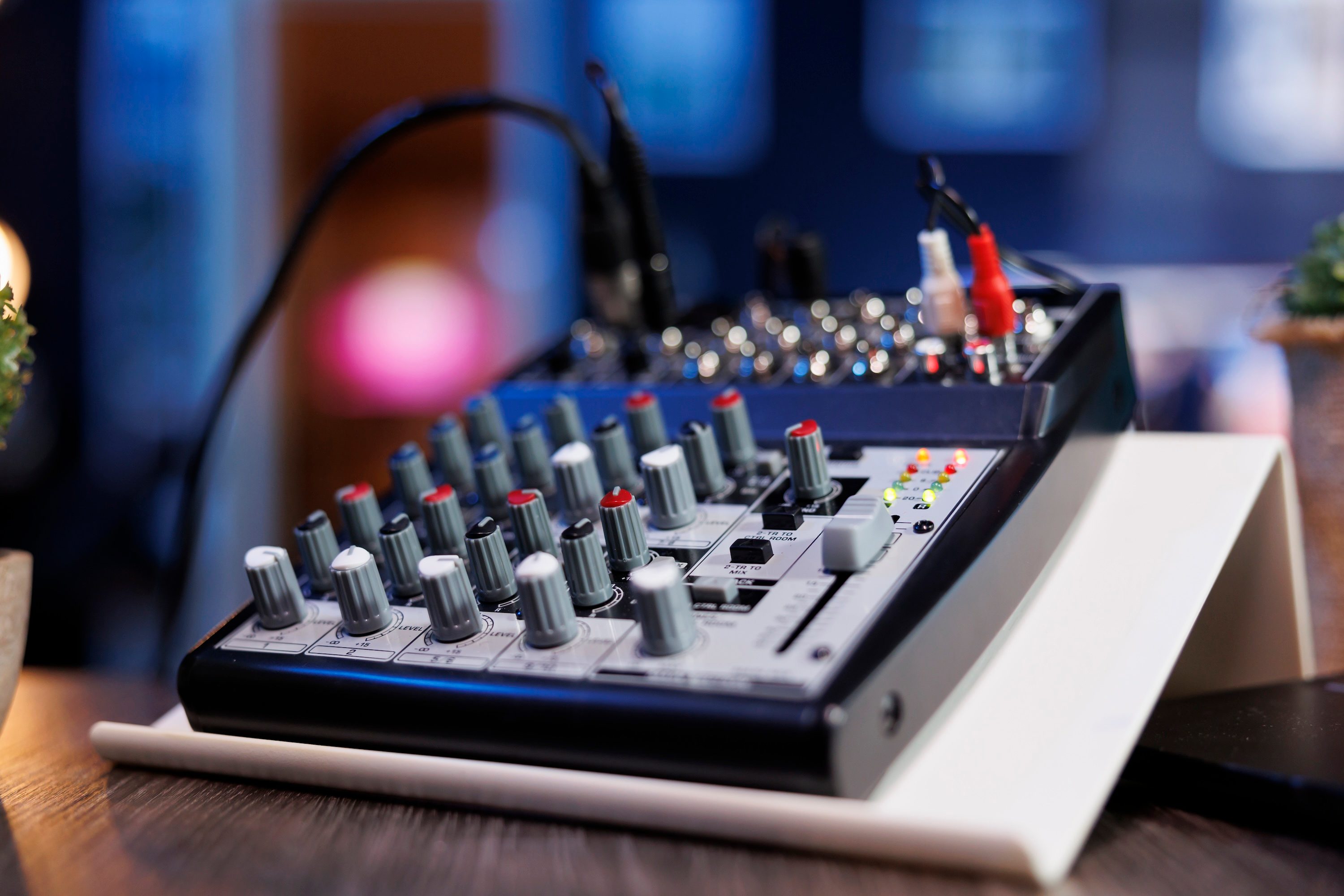Need advice? Let's talk.
Get straightforward guidance from your broadcasting partner. Schedule a call to chat with the team about your radio station.
Book DemoYour First 15 Months: A Realistic Timeline for Radio Station Success
Starting a radio station? Our realistic 15-month timeline guides you from launch and promotion to building an audience and achieving long-term success.

Starting a radio station is exciting, but it’s also a journey that takes patience, consistency, and a bit of strategy. A lot of people start broadcasting thinking they’ll get instant listeners and make money right away. The truth is, that rarely happens. Building a station that actually grows takes time.
That’s why we’ve put together a realistic 15-month roadmap. This isn’t about overnight success. It’s about showing you what to focus on at each stage so you can build an audience, keep your station running smoothly, and set yourself up for long-term growth.

Months 1-3: Laying the Groundwork
The first three months are all about getting the basics right. Think of it as preparing the engine before you hit the road.
Set Realistic Goals
It’s easy to feel frustrated when listener numbers start at zero. In these early months, focus on things you can actually control:
- Getting your station set up technically
- Defining your audience and programming format
- Building a small library of content
- Planning how you’ll promote your station
These small wins matter. They give you a foundation to build on.
Nail the Tech
Technical problems can kill your momentum, so make sure your mic, mixer, and headphones are reliable and that your streaming software is set up correctly. Your branding, including your station name, logo, and visuals, should also match the audience you’re trying to reach.
Getting this right now saves headaches later and makes your broadcasts sound professional.
Plan Your Content
Content is what keeps people coming back. In these early months, focus on:
- Developing a program schedule and sticking to it
- Pre-recording shows to cover gaps
- Researching your niche so you know what your listeners want
Planning ahead prevents gaps in programming. Dead air is a quick way to lose early listeners.
Months 4-6: Launch and Promotion
By month four, it’s time to go live. The main focus here is getting your station out there and attracting your first listeners.
Promote Your Station
Even if you’ve got amazing content, people won’t find it on their own. Try:
- Sharing your station with friends, family, and on social media
- Joining online communities in your genre
- Building an email list for early supporters
- Running a small paid campaign if your budget allows
Growth will be slow at first. That’s completely normal. Most stations see their first traction in months five or six.
Engage Your Early Listeners
Your first listeners are your most loyal fans. They’ll give feedback, share shows, and help shape your station. Engage with them by:
- Responding to messages and comments
- Encouraging participation in shows
- Asking for suggestions
These early relationships help your station grow faster.
Manage Your Costs
In these early months, you’ll spend money on hosting, promotion, and equipment without seeing much return. That’s okay. Think of it as investing in your station’s future.

Months 7-9: Audience Building
By now, you should be broadcasting consistently. This is when growth starts to pick up, but it still takes effort.
Track What’s Working
Use analytics to see how listeners interact with your station. Keep an eye on:
- Average listening time
- Popular shows or segments
- Peak listening hours
These numbers help you make smarter decisions about programming and promotion.
Adjust Your Content
Listen to feedback. Some shows will hit, some won’t. Pay attention to what’s working and tweak what’s not. Making changes based on real feedback keeps people coming back and encourages word-of-mouth growth.
Expand Your Reach
Start going further by:
- Collaborating with guest hosts or influencers
- Submitting your station to directories and streaming apps
- Continuing social media promotion and running small paid campaigns
Growth is gradual, but steady effort adds up.
Months 10-12: Consistency and Monetization Prep
By month ten, your station should have a clear identity, a loyal audience, and a regular schedule. This is also when you start thinking about monetization.
Strengthen Your Brand
Your brand helps your station stand out. Focus on:
- Improving visuals like logos and social graphics
- Keeping tone and style consistent across shows
- Highlighting what makes your station unique
Strong branding builds trust and keeps listeners coming back.
Start Thinking About Monetization
Don’t expect instant revenue. Instead, start laying the groundwork:
- Sponsorships with local businesses
- Affiliate partnerships that fit your audience
- Listener donations or memberships
Even if it’s not bringing in money yet, starting early sets you up for success.
Keep Momentum
Listener growth can stall if things get stale. Keep your station lively by:
- Adding new segments or shows
- Running themed events or competitions
- Getting your audience involved
Small changes make a big difference.

Months 13-15: Scaling Up
The final phase is about scaling your station and solidifying success. By now, consistent work should start paying off in listener numbers and engagement.
Expand Your Audience
You can grow even more by:
- Investing in targeted advertising campaigns
- Partnering with influencers or other stations
- Adding on-demand content or podcasts
These strategies broaden reach without adding too much extra work.
Evaluate Performance
Take a close look at:
- Listener trends and growth over the last year
- Engagement levels across shows
- Financial performance and return on investment
Use this information to refine your strategy for year two. Successful stations always iterate based on real data.
Celebrate Milestones
Don’t forget to celebrate wins, big or small. Hitting 1,000 listeners, running a successful event, or landing a sponsorship are all reasons to pause and enjoy progress.
Setting Realistic Expectations
Radio success doesn’t happen overnight. Many new broadcasters quit early because they expect instant results. The truth is:
- The first months are about setup and investment
- Listener growth takes time and consistency
- Monetization usually comes after sustained effort
Understanding this 15-month timeline helps us stay motivated and committed.
Why the 15-Month Timeline Works
This framework works because it:
- Breaks the journey into manageable stages so progress is easy to track
- Encourages consistent action, avoiding gaps in content or promotion
- Sets realistic expectations for growth and monetization
- Builds a solid foundation for long-term success
Many successful stations look back on this first year as the time they experimented, learned, and laid the groundwork for future growth.
Key Takeaways
Here’s a quick summary of what the first 15 months should look like:
- Months 1-3: Setup, technical configuration, content planning, and goal setting
- Months 4-6: Launch, promotion, early listener engagement, and managing costs
- Months 7-9: Audience building, analytics tracking, content optimization, and expanding reach
- Months 10-12: Brand strengthening, monetization prep, and maintaining momentum
- Months 13-15: Scaling, audience expansion, performance evaluation, and celebrating milestones
Patience, consistency, and realistic expectations are your biggest allies. Following this roadmap gives your station the best chance at long-term growth and success.
A Realistic Radio Station Timeline for Long-Term Success
Every station grows at its own pace, but sticking to a realistic radio station timeline helps you stay focused and motivated. The first 15 months are about more than numbers; they’re about learning your audience, refining your content, and building a brand that lasts.
We’ve seen it time and time again: stations that stay consistent, track their progress, and adjust their strategy are the ones that succeed. Growth takes time, but the results are worth it. If you stay committed, you’ll not only build a loyal audience; you’ll build something that lasts.
Need Help? Book a Personal Consultation
Starting or growing your own radio station can raise a lot of questions. Whether you need help with the technology, are looking for expert radio advice, or just want a guided tour of our platform, our team is here to help.
We offer one-on-one consultations to provide personalized support.
To learn more and book your session, visit our Broadcast Training page.
If you’re ready to take the next step, it’s time to cue your first broadcast. With Radio.co, you can set up, manage, and grow your station from one simple platform. Start your free trial today and see how easy it is to bring your station to life.



